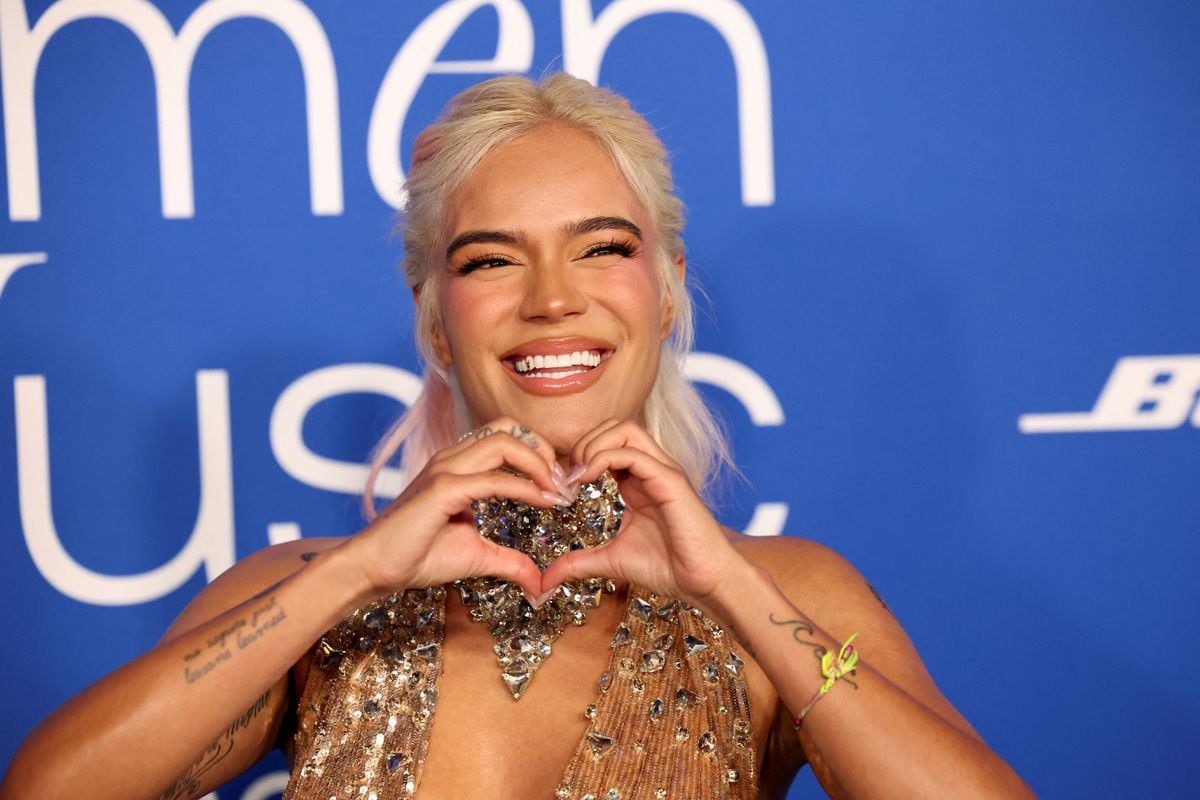When Tamara Lunger reaches the top of the K2, she turns over her GoPro, takes off her goggles and films her own face. "That's awesome," she says in a fragile voice, waving the small camera over the surrounding Himalayan peaks and back to her face. "I think I have found myself again." A few tears roll down her cheeks. An emotional moment.
Lunger was the first South Tyrolean to reach the summit of the second highest mountain in the world in July 2014, together with her climbing partner Klaus Gruber. The K2 (8611 meters) is considered the most difficult eight-thousander. Only eleven women managed the summit so far, out of a total of about 300 climbers. Lunger climbed it without artificial oxygen.
Gore Tex / Frederking & Thaler Verlag
Tamara Lunger on the top of K2 (shot from 2014)
The 33-year-old is one of the most successful mountain climbers in the world - and yet many people only know her because her film on climbing the K2 was shown on the commercial "European Outdoor Film Tour". In contrast to well-known male mountaineers or climbers of our time such as Stefan Glowacz, David Lama, Ueli Steck or Alexander and Thomas Huber, the mountaineering women are less well known.
Gerlinde Kaltenbrunner may still be familiar to many people: she became the first woman without artificial oxygen to climb all 14 eight-thousanders - 25 years after the first husband, Reinhold Messner, whose name undoubtedly goes to people who have nothing to do with mountains.
In the picture book "Bergmenschen", which portrays some of the most famous alpinists of our time, seven women are interviewed - and 27 men. Perhaps this unequal relationship is simply because there are more male mountaineers than females. Perhaps it is also because male climbers have so far quantitatively seen the more notable achievements. Or do you have more courage?
Price query time:
13.11.2019, 13:08 clock
No guarantee
DISPLAY
Michael Ruhland
Illustrated book: Bergmenschen. 30 icons of the mountains about risk, love and humility. Sensational staged portraits, exciting interviews with extreme mountaineers and prominent mountain enthusiasts.
Publishing company:
Frederking & Thaler Verlag GmbH
Pages:
224
Price:
EUR 34.99
With photographs by Christoph Jorda
Buy from Amazon Buy from Thalia
Product information is purely editorial and independent. The so-called affiliate links above, we usually receive a commission from the dealer when buying. More information here.
For a long time, mountaineering was considered a pure male domain - women were too weak, it was said earlier, not brave enough, it was not fitting for the female sex to climb mountains. "A shaggy witch with tangled hair and negligent clothing is not the embodiment of feminine charm," wrote mountain author Franz Nieberl in the 1930s.
"Women do not risk their lives so recklessly"
These times are long gone - fortunately. Nevertheless, mountain sports are still dominated by men at the top, says Michael Ruhland, the author of Bergmenschen. "The relationship in the book is likely to reflect the real relationship between men and women - without me paying particular attention," says Ruhland, who is also editor-in-chief of the magazine "Mountaineers". "Generally speaking, women are given greater care and a healthier risk assessment, meaning they do not risk their lives recklessly."
The history of alpinism confirms this assumption, he says: far fewer women were killed in the mountains than men - the percentage of men and women included. "In any case, women are in terms of stamina, their technical conditions and their capacity for suffering, in no way inferior to men on the mountain."
photo gallery
12 pictures
"Bergmenschen" picture book: Strong women on the mountainTamara Lunger has set herself the goal to behave in the mountains as her male companions. "Everyone has to do the same on the mountain," she says. "I want to carry a lot, I want to decide the same, I want equal responsibility." She sees herself primarily as a climber, not as a woman.
10, 15 kilos lighter - but in the backpack the same weight
The ice climbing world champion Ines Papert even finds that women do more than men: they feel most likely disadvantaged when backpacking, says the 45-year-old. Everyone carries the same weight on expeditions - "I weigh ten or fifteen kilos less than the men, so I'm wearing more than that."
Otherwise, she now finds men and women as equal on the mountain. Papert, who won the overall World Cup in ice climbing just one year after the birth of her son, tells in the interview for the illustrated book how she got her motherhood and mountain sports under one roof.
Check out this post on Instagram
A post shared by Ines Papert (@inespapert) on Feb 22, 2019 at 11:10 PST
Check out this post on Instagram
A post shared by Ines Papert (@inespapert) on Jan 23, 2019 at 10:53 PST
"Whether the future of mountaineering will be more feminine, I can hardly say," says Ruhland. "Personally, I do not believe in it, because there is still the point of being a professional." To live from mountaineering is not easy. One must present oneself medially and have a good business sense. "I'm afraid women are more reserved than men," he says. "What makes her more sympathetic."
Lunger and Papert are among the mountaineers who have come out self-marketing meanwhile: Their Instagram accounts are full of mountain adventures and climbing photos. They are sponsored by brands like North Face or Arcteryx, as are their male counterparts. And often they look more authentic and approachable than some of their male counterparts - they too enjoy what they do.
Check out this post on Instagram
A post shared by Tamara Lunger (@tamaralunger) on Dec 20, 2018 at 8:44 PST
But the tears!
Of course, women do not radiate uninterrupted. As Lunger climbed the K2, she not only defeated the summit, but also her lovesickness. Several times in the film can be seen how she cries for the lost love. Typical woman, this emotionality? Not at all.
It is known that Messner plunged the divorce of his first wife Uschi Demeter into his deepest personal crisis - and he fled into his solo expeditions. The professional climber Tommy Caldwell obsessively practiced the difficult route "Dawn Wall" on El Capitan in Yosemite National Park to get over the separation of his great love.
Peter Habeler quickly wanted to go back down to his wife and newborn son when he first reached the summit of Mount Everest without artificial oxygen - fearing he would never see his family again, he slipped on his seat down to the camp , Alex Honnold, who often seems to be emotionally poor, said "I love you" to his girlfriend for the first time when he survived the ascent without the rope of El Capitan - that's how it is portrayed in the documentary "Free Solo".
Being overpowered by one's own emotions in the mountains seems to be a cross-gender phenomenon.









